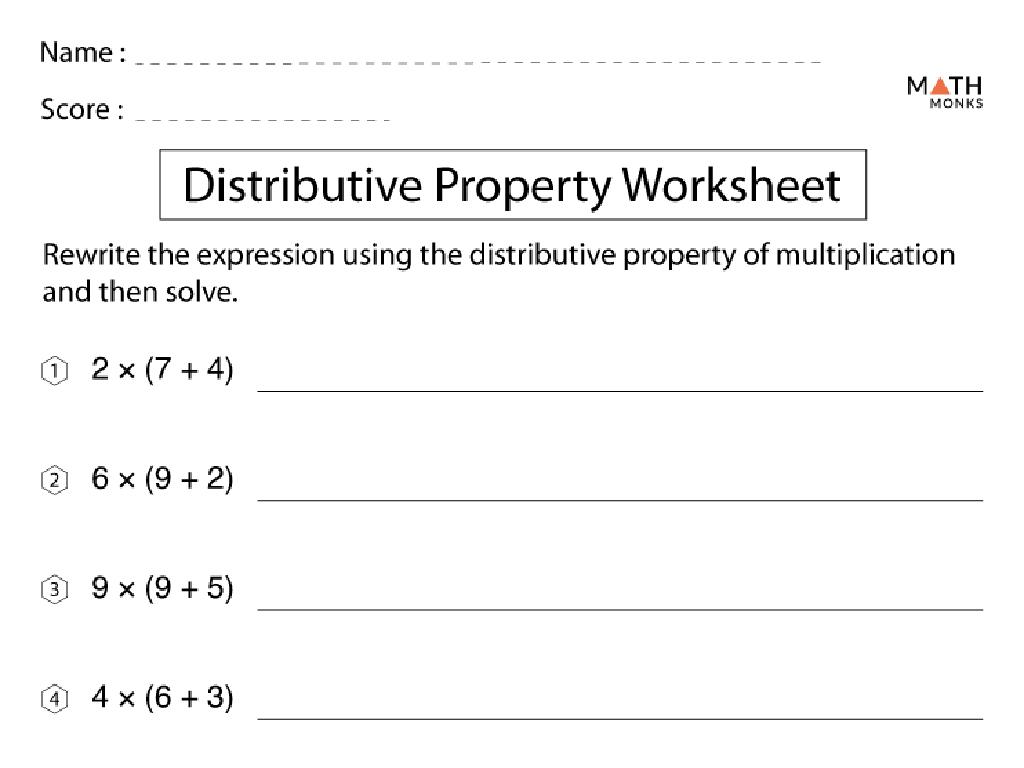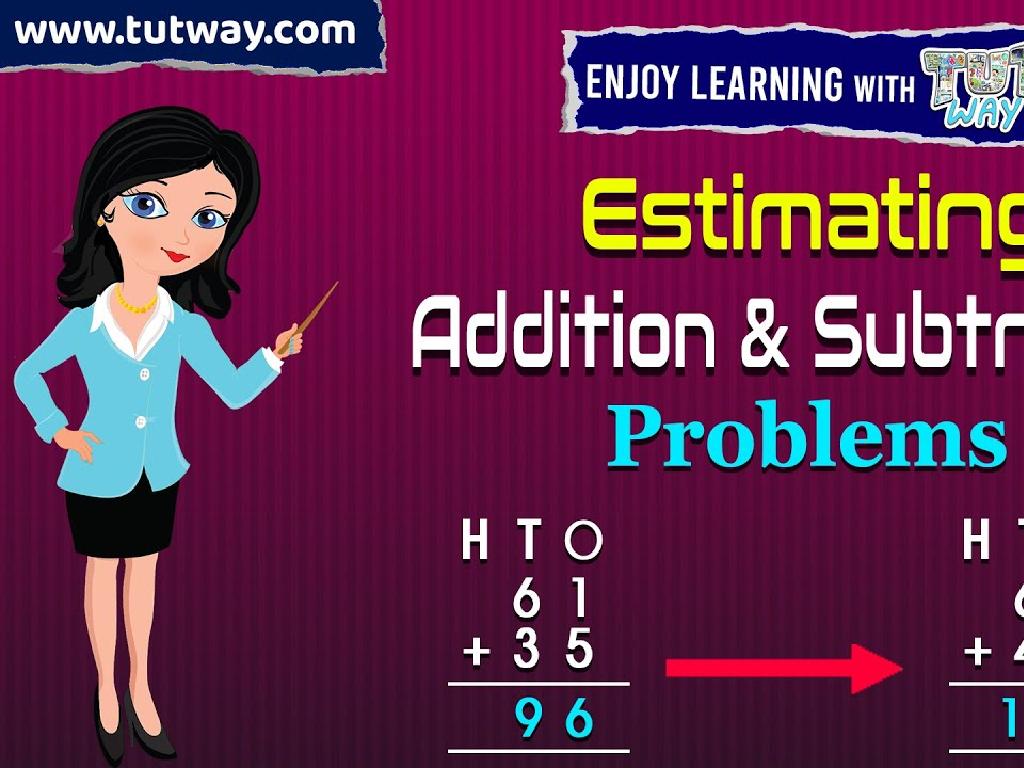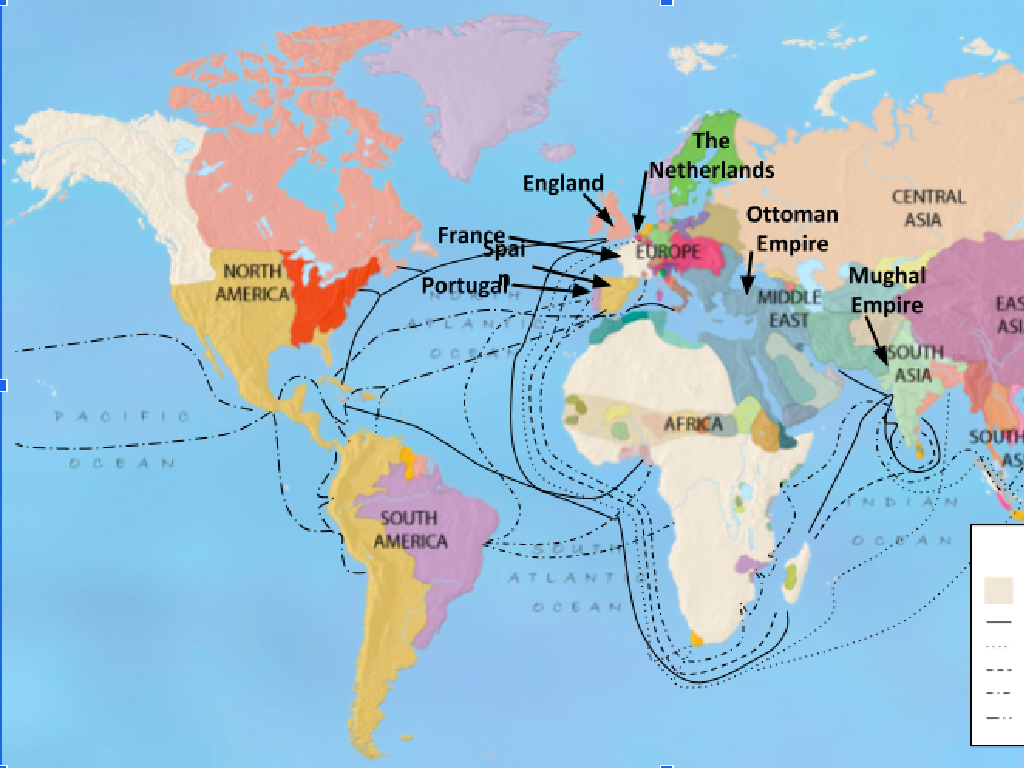Write Two Multiplication Sentences For An Array
Subject: Math
Grade: Third grade
Topic: Multiplication Properties
Please LOG IN to download the presentation. Access is available to registered users only.
View More Content
Multiplication Properties: Arrays
– Arrays help us understand multiplication
– Each row represents a multiplication sentence
– If an array has 3 rows of 4, one sentence is 3 x 4
– Each column represents a multiplication sentence
– If the same array has 4 columns of 3, another sentence is 4 x 3
– Practice writing two sentences for one array
– Let’s try with different arrays to write sentences
|
Today’s lesson introduces the concept of arrays as a visual representation to help understand multiplication properties. Arrays are made up of rows and columns that can be counted to form multiplication sentences. For example, an array with 3 rows and 4 items in each row can be represented by the multiplication sentence 3 x 4. Conversely, the same array can also be represented by 4 x 3, demonstrating the commutative property of multiplication. Encourage the students to visualize and write two multiplication sentences for various arrays. This will help them grasp the concept of multiplication as repeated addition and understand how the number of rows and columns in an array corresponds to the factors in a multiplication sentence.
Understanding Arrays in Multiplication
– An array organizes objects
– Think of it like a neat tray of eggs
– Rows have equal objects
– Arrays assist multiplication
– It’s a visual multiplication tool
– Example: 3 rows of 2 apples
– 3 rows of 2 gives us 3 x 2 = 6 apples
|
Introduce the concept of an array to the students as a visual tool to help with multiplication. Explain that an array is made up of rows and columns and that each row must have the same number of objects. Emphasize that this organization allows us to easily count and multiply the number of objects. Use everyday examples, such as a carton of eggs arranged in rows and columns, to illustrate the concept. Show them how to write multiplication sentences for an array, such as 3 rows of 2 apples can be written as 3 x 2, which equals 6. Encourage students to create their own arrays with different objects and write the corresponding multiplication sentences.
Multiplication Sentences and Arrays
– What is a multiplication sentence?
– It’s a way to show repeated addition, like 2 × 3 means 2+2+2.
– Describing rows and objects
– Tells us the count per row and number of rows, like seats in a theater.
– Example: 3 rows of 4 objects
– 3 × 4 means 3 groups with 4 in each, like 3 baskets of 4 apples each.
– Writing our own sentences
– Use objects like toys to create groups and write sentences like 2 × 5.
|
This slide introduces the concept of multiplication sentences to third-grade students, explaining how they represent the total number of objects arranged in rows. Start by defining a multiplication sentence and its components. Use visual aids or physical objects to demonstrate the concept of rows and objects. Provide the example of 3 rows of 4 objects to illustrate how to write a multiplication sentence (3 × 4). Encourage students to practice by arranging objects in arrays and writing corresponding multiplication sentences. This activity helps solidify their understanding of multiplication as repeated addition and prepares them for more complex multiplication tasks.
Writing Multiplication Sentences for Arrays
– Count the rows in the array
– If there are 3 rows of apples, we have 3 rows.
– Count objects in each row
– If each row has 4 apples, then each row has 4 objects.
– Write rows times objects
– For 3 rows of 4, we write 3 x 4.
– Try writing it reversed!
– We can also write it as 4 x 3.
|
This slide is aimed at helping third-grade students understand how to write multiplication sentences from arrays. Start by counting the number of rows in the array, which will be the first number in the multiplication sentence. Next, count the number of objects in each row, which will be the second number in the sentence. Demonstrate that multiplication is commutative, meaning that the order of numbers does not affect the product, by writing the sentence in reverse order. Use visual aids like arrays of fruits or toys to make the concept more relatable and easier to grasp. Encourage students to practice with different arrays and to check their understanding by calculating the total number of objects both ways.
Let’s Practice Multiplication with Arrays!
– Observe an array: 2 rows of 5
– First sentence: 2 × 5
– What’s another sentence?
– Think: How many total objects?
– Share your answers!
– Ready to explain your thinking?
|
This slide is for a class activity to help students practice writing multiplication sentences for an array. Present an array with 2 rows and 5 objects in each row. The first multiplication sentence is given as 2 × 5. Ask the students to write another multiplication sentence that represents the same array. Guide them to understand that multiplication is commutative, meaning they can also multiply the number of objects in each row by the number of rows (5 × 2). Encourage students to share their answers and explain their reasoning. Possible activities: Have students draw their own arrays, use manipulatives to build arrays, or find arrays in the classroom and write multiplication sentences for them.
Multiplication Sentences for Arrays
– Arrays show multiplication visually
– Write two sentences for one array
– For a 2×3 array: 2 rows of 3 is 2×3, and 3 columns of 2 is 3×2
– Changing order changes the sentence
– The Commutative Property of multiplication at work!
– Practice with different arrays
– Try creating your own arrays to write sentences
|
This slide is aimed at helping third-grade students understand how to write multiplication sentences from arrays. An array is a visual representation of multiplication concepts, showing rows and columns of objects. Students will learn to write two multiplication sentences for the same array, demonstrating the Commutative Property of multiplication, which states that numbers can be multiplied in any order and the product will be the same. Encourage students to notice the different sentences they can write by changing the order of numbers. Provide various arrays for them to practice with and ask them to create their own arrays as a hands-on activity.
Class Activity: Create Your Own Array
– Find objects to make an array
– Arrange objects in rows and columns
– Write two multiplication sentences
– If you have 3 rows of 4, write 3×4 and 4×3
– Share with the class!
|
This activity is designed to help students understand arrays and how they relate to multiplication. Have the students look around the classroom for small objects they can use to create an array, such as erasers or blocks. They should arrange these objects in rows and columns, then write two multiplication sentences that describe their array. For example, if a student creates an array with 4 rows and 5 columns, they would write ‘4×5’ and ‘5×4’. After creating their arrays and writing their sentences, students will share their work with the class. This will help them see the commutative property of multiplication in action. Possible variations for different students could include using different numbers of objects or arranging them in unique shapes while still maintaining a clear array structure.
Conclusion: Mastering Multiplication with Arrays
– Celebrating our learning
– Writing multiplication for arrays
– Arrays show rows and columns as groups
– Arrays make multiplication clear
– Like a game board with rows of squares
– Practice makes perfect
|
Well done on today’s lesson! We’ve successfully learned how to write multiplication sentences by using arrays. Arrays are a fantastic visual tool that help us understand and organize multiplication by showing items in rows and columns. It’s like having a game board where we count the rows and columns to find the total number of squares. Remember to keep practicing with different arrays to become more confident in writing multiplication sentences. Encourage students to create their own arrays at home with objects like toys or snacks to reinforce today’s lesson.






